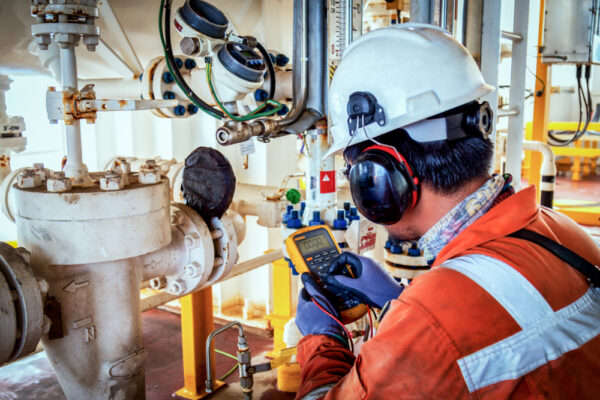The Ultimate Guide To Roar Solutions
The Ultimate Guide To Roar Solutions
Blog Article
What Does Roar Solutions Mean?
Table of ContentsThe Basic Principles Of Roar Solutions The Greatest Guide To Roar SolutionsHow Roar Solutions can Save You Time, Stress, and Money.
In order to protect installments from a prospective explosion an approach of analysing and identifying a possibly hazardous location is required. The objective of this is to make sure the correct selection and setup of devices to ultimately stop an explosion and to make certain security of life.
(http://prsync.com/roar-solutions/)
No equipment ought to be set up where the surface temperature of the equipment is greater than the ignition temperature of the given risk. Below are some common dust hazardous and their minimum ignition temperature. Coal Dust 380C 225C Polythene 420C (melts) Methyl Cellulose 420C 320C Starch 460C 435C Flour 490C 340C Sugar 490C 460C Grain Dust 510C 300C Phenolic Resin 530C > 450C Aluminium 590C > 450C PVC 700C > 450C Soot 810C 570C The likelihood of the hazard existing in a focus high adequate to create an ignition will certainly vary from location to area.
Dangerous area electrical equipment possibly made for usage in higher ambient temperatures. Field Repair Work By Authorised Personnel: Complex testing might not be required nonetheless details treatments may need to be followed in order for the tools to maintain its 3rd celebration score. Each piece of tools with an unsafe score must be assessed independently.
Roar Solutions Fundamentals Explained
The tools register is an extensive data source of devices documents that includes a minimum collection of areas to determine each item's place, technical specifications, Ex classification, age, and ecological data. This details is important for monitoring and handling the tools efficiently within unsafe areas. In comparison, for routine or RBI sampling examinations, the grade will be a mix of Comprehensive and Close examinations. The ratio of In-depth to Shut inspections will be established by the Equipment Danger, which is analyzed based on ignition risk (the likelihood of a source of ignition versus the possibility of a combustible ambience )and the dangerous area category
( Zone 0, 1, or 2). This variant will certainly likewise affect the resourcing needs for job preparation. Once Whole lots are defined, you can establish tasting plans based upon the example dimension of each Lot, which describes the number of arbitrary tools items to be inspected. To figure out the required sample dimension, 2 aspects require to be examined: the dimension of the Great deal and the category of assessment, which indicates the degree of initiative that should be used( decreased, normal, or increased )to the examination of the Lot. By incorporating the classification of inspection with the Great deal size, you can then establish the suitable being rejected requirements for a sample, implying the allowable number of faulty things located within that example. For more details on this procedure, please describe the Power Institute Standards. The IEC 60079 typical advises that the maximum interval in between assessments must not surpass three years. EEHA examinations will certainly likewise be conducted beyond RBI projects as part of set up maintenance and equipment overhauls or repair services. These evaluations can be credited toward the RBI example sizes within the influenced Great deals. EEHA evaluations are performed to determine faults in electric devices. A heavy racking up system is vital, as a solitary piece of equipment might have multiple mistakes, each with varying degrees of ignition threat. If the consolidated score of both assessments is less than two times the fault rating, the Lot is considered acceptable. If the Great deal is still considered inappropriate, it needs to undergo a complete evaluation or validation, which may activate more stringent evaluation methods. Accepted Lot: The root causes of any faults are recognized. If a typical failure setting is found, added tools may require examination and fixing. Faults are categorized by severity( Security, Stability, Home cleaning ), guaranteeing that immediate concerns are assessed and dealt with without delay to minimize any kind of effect on security or procedures. The EEHA data source need to track and tape-record the lifecycle of faults in addition to the rehabilitative actions taken. Executing a durable Risk-Based Examination( RBI )strategy is essential for making sure conformity and safety and security in taking care of Electrical Equipment in Hazardous Areas( EEHA) (electrical refresher course). Automated Fault Scoring and Lifecycle Management: Effortlessly manage faults and track their lifecycle to enhance inspection accuracy. The intro of this assistance for risk-based examination further strengthens Inspectivity's placement as a best-in-class solution for governing conformity, along with for any type of asset-centric assessment use situation. If you have an interest in finding out more, we invite you to request a demonstration and discover how our remedy can change your EEHA administration processes.
A Biased View of Roar Solutions

In terms of explosive danger, an unsafe area is an environment in which an eruptive environment exists (or may be anticipated to be present) in amounts that need special preventative measures for the construction, installation and usage of devices. high voltage courses. In this write-up we explore the obstacles dealt with in the office, the danger control measures, and the needed competencies to function securely
It issues of modern-day life that we produce, save or deal with a series of gases or liquids that are considered flammable, and a variety of dirts that are deemed flammable. These substances can, in specific problems, create explosive ambiences and these can have major and heartbreaking consequences. A lot of us are acquainted with the fire click for more info triangle eliminate any kind of one of the three aspects and the fire can not take place, but what does this mean in the context of harmful locations? When damaging this down into its easiest terms it is basically: a combination of a specific quantity of launch or leakage of a particular compound or material, combining with ambient oxygen, and the visibility of a source of ignition.
In most instances, we can do little about the levels of oxygen in the air, but we can have significant influence on sources of ignition, as an example electrical equipment. Dangerous areas are documented on the dangerous area classification drawing and are determined on-site by the triangular "EX LOVER" indication. Right here, amongst other essential info, zones are split into three types relying on the danger, the chance and period that an eruptive environment will exist; Zone 0 or 20 is deemed the most hazardous and Area 2 or 22 is regarded the least.
Report this page